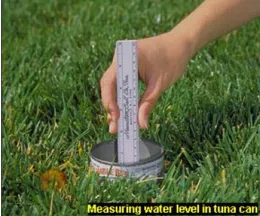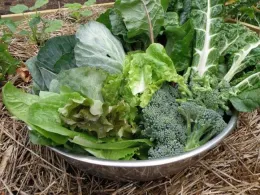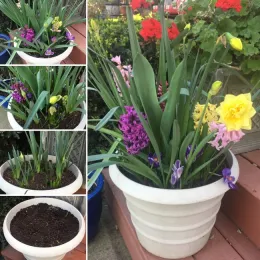As the summer swelters on, we can all be thankful that there are only four big things to think about each month. Be smart about sun exposure and work in the early mornings or spread the chores across several days if needed.
July Ideas
ONE –WATER – We are officially facing another drought year, so conservation of as much water as possible in the landscape is an imperative. Do not water mature, native California oaks. To save mature, drought tolerant trees, deep water only once per month. Mature fruiting and most ornamental trees growing in our clay-loam soil will need a deep irrigation every 14 days. Mature citrus trees can go about 10 days between deep irritations. Potted trees are not good conservers of water. They need to be checked, and in some cases, watered daily.

THREE – It's hot outside, but the need to garden continues. Try making an open terrarium filled with succulents. Place a layer of stones plus some horticultural charcoal at the bottom of a glass container. Top the stones and charcoal with a thin layer of moss and some soil. Add succulents, a decorative item or two, and water gently. Let the soil dry out completely between watering.
FOUR – Avoid harboring pests that will affect next year's production by cleaning up mummies and old fruit and nuts in and under trees.
In August
ONE – Take some time during these dog days of summer to enjoy the landscape and garden while planning a winter garden and deciding on landscape additions. Select seed, gather whatever soil amendments, tools, and irrigation supplies are needed, and find where that perfect plant, shrub, or tree can be purchased. Visits to nurseries are a great way to beat the heat.
TWO – It is time to think of a cool season vegetable garden. Just saying those words, like a mantra, may bring some

THREE – Apricots and cherries should have their final pruning this month. Pruning during the wet, winter season could lead to detrimental canker infections in the trees. The pathogens for these diseases are spread by rain or tree wounds (like pruning cuts) during wet weather and continue to spread through the wood of the tree for several years.
FOUR –Note Lee Miller's Help Desk article in this Blog and plant a bed of strawberries this month for an abundant crop next year. Since plants only produce well for about three years, try only planting a third of the patch this year, adding a third next year and a third the following year. Planting on a rotation like that will result in a consistent yield and not be such a daunting task in the heat of summer.
September Notes
ONE – While people might like the coming of cooler weather that September signals, so do fleas! Be sure to groom and monitor pets during the cooler months of autumn to detect the beginning of any infestation. In California, Cat fleas, Ctenocephalides felis, are most common on domestic cats and dogs. Although dog fleas look like cat fleas, they are rare in our state. Adult fleas are no larger than 1/8 inch long, so it is difficult to see a number of the characteristics used to describe them. These reddish-brown, wingless insects are laterally compressed, so they look as if they are walking on edge. Cat fleas have both pronotal and genal combs. For more information on these unwanted insects which can also infest a home if left unchecked, see the UC IPM pest notes on fleas.
TWO – Landscapes can be brightened by setting out transplants of a variety of flowers found in local nurseries. Favorites include pansies, verbena, dianthus, and mums. If there is room, plant a tree on the southwest side of a dwelling to provide shade in the coming years. Be sure to check the mature size (both width and height) of the tree to know if there will be ample room once it reaches maturity. Shrubs and groundcover that are beginning to look a little bedraggled should be replaced as the weeks begin to cool. If this is a more bountiful year for water, nature should do most of the fall and winter watering to develop a strong root structure and beautiful new growth starting next spring. If we are facing another dry winter, remember that even “low water” and “drought resistant” plants need consistent watering until they are established.

FOUR – In case rain is sparse again this year, organic mulch applied several inches thick around plants will help keep roots moist. Keep the mulch 3-5 inches from the trunks of plants to avoid problems with rot. This is basically just good practice in the landscape whether or not there is ample winter rain.
Information for this article has been gathered from:

